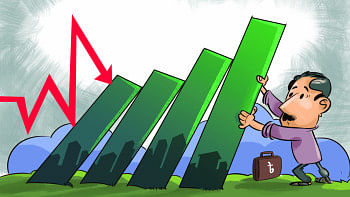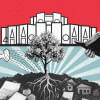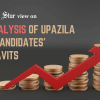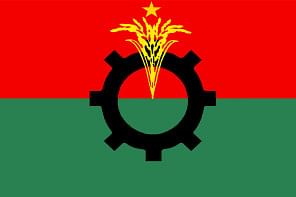What is in store for the new year?

It is customary, almost ritualistic, to ask two questions at the beginning of a new year – how the past year went and what is in store for this year. Such ritual notwithstanding, the new year does provide an opportunity to introspect for nations as much as for individuals. Often, the past year lays the pathway for the future. As such, 2022 was no exception when it comes to South Asia. Although the region is always known to be volatile, the past year was more so than usual. Economic crisis and political upheavals have shaken several countries.
Looking back at 2022, experts on the South Asian political and economic landscape would highlight the ongoing economic crisis for understandable reasons. Economic crises landed three countries – Bangladesh, Pakistan and Sri Lanka - at the doorstep of the International Monetary Fund (IMF) in 2022. The economic picture of these countries appears to be the same – dwindling foreign reserves, liquidity crisis in banks, growing trade imbalance, severe depreciation of local currencies, rising cost of fuels and daily necessities.
Bhutan, anticipating similar crises, acted preemptively and took measures that enabled it to avoid a full-blown crisis but didn't prevent people from facing unprecedented hardship. The hardship has not spared India either, although its economy appears to be facing the crisis better. Its political situation is a different story altogether. In all the countries of the region, the poor and lower-middle class are bearing the brunt as various austerity measures are being put in place by their respective governments.
The conventional wisdom about the crisis has explanations about its causes and consequences. In terms of the causes, the aftermath of the Covid-19 pandemic and the Russian aggression in Ukraine are paramount. As for the consequences, it is argued that the economic crisis has engendered a political crisis, which led to the downfall of the Rajapaksa government in Sri Lanka and the Imran Khan government in Pakistan. Bangladesh's recent anti-government demonstrations are also viewed through the same prism.
There are some merits to this causal explanation. According to the IMF, the global economic slowdown is unavoidable; others are warning of a global recession. In 2021, the global economy grew at the rate of 6 percent, whereas the projected 2022 growth rate is 3.2 percent, and 2.7 percent in 2023. South Asian countries growth will be around 5.8 percent in 2022, as opposed to 7.8 percent in 2021. These figures indicate that the region's economy was making progress even after the Covid-19 pandemic. As such, the slowdown in 2022 can be attributed more to the Ukraine war.
But it is important to ask whether the global economic situation is sufficient to provide an explanation for the countries' economic woes. Take, for example, Pakistan, which is on the verge of bankruptcy as the prospect of sovereign default stares it in the face. It didn't come to this situation in a single year. In early December, government officials estimated that the country will require USD 26 billion to service its USD 124 billion in foreign debts in the fiscal year 2022. Almost 30 percent of it has been borrowed from China. These loans were taken over the years, and have been used in unproductive sectors and lost in corruption.
When Sri Lanka defaulted in early 2022, it became well-known that its borrowing from external sources was significantly high. In November, after months of turmoil and tightening of the belt, the amount stands at USD 40.6 billion, of which 22 percent is from Chinese creditors.
Bangladesh's external debt's official account has also been questioned by experts. The total is estimated to be USD 95.85 billion, and the amount is rising. In the past six years, the country's foreign debt has doubled. In 2022, Bangladesh's debt service obligation was USD 23.4 billion, which includes deferred letters of credit (LCs), and short and long term debt obligations. It is not to say that the economic crisis of these countries is solely down to their external debts, but to suggest that they were in the making for quite some time and the current global economic crisis only exacerbated the problem. In the case of Pakistan, the devastating floods added to the misery.

The borrowing practices of these countries are a result of the economic policies of the ruling parties. They have, in large measures, opted for dazzling GDP growth figures without considering how much growth is being distributed among common citizens. The 2022 economic crisis of the region has laid bare the hollowness of the non-inclusive economic policies pursued by the ruling elites of the region, and once again reminded us that GDP is not always a good predictor of the economic health of a country. Reckless policies, unsustainable spending, unrestrained corruption and disregard for the larger segments of society are the factors which are at the heart of the problem. These are intrinsic parts of the system of governance.
Cronyism was not an exclusive preserve of Sri Lanka's Rajapaksa government; it is equally true for the current governance system of Bangladesh. The deliberate dispensation of accountability mechanisms and adoption of an authoritarian style of governance allowed the economy to rot from within. Unfortunately, those who caused this crisis are not bearing the burden, but those at the receiving end are now asked to pay the price. Their lives have been upended, thanks to the price hike of essentials and depletion of their life savings.
The political upheaval in Sri Lanka, the ongoing anti-government protests in Bangladesh, and the widespread popular discontent against the previous and current government in Pakistan reflect the deep-seated resentment of the citizens of these countries. Portraying the activism of the people as only a reaction to rising costs misses this point. While the current economic crisis has triggered the demonstrations, the demands are not only about the economy, but of fundamental reform of the political system. In Bangladesh, it is about demanding a voice in governance; in Sri Lanka, it is about dismantling a system that allows a small group of people to dictate policies, and in Pakistan, an end to the fractious politics where the military plays a pivotal role from behind the scenes. In all instances, personalisation of state power became a hallmark of governance.
As these countries begin a new year, the question is, what does the future hold? The economic and political crises that engulfed these South Asian countries are not going to go away soon. For how long Pakistan's fractious coalition government can hold on to power remains an open question, and whether it can deliver on its promise to take the country out of the economic crisis is something to be seen. Their record so far is not very promising and an election is scheduled in 2023, which may cause further acrimony among political forces. Sri Lanka continues to struggle, and the government is yet to secure loans from the IMF. The changes the demonstrators demanded have not been implemented yet.
The worst of Bangladesh's economic woes may yet come, but the political situation is gradually changing. The questions are whether the incumbent is willing to acknowledge that the country is in crisis and political direction warrants a change, and whether the opposition will succeed in burying their differences and mount pressure on the government to hold a free and fair election.
Ali Riaz is a distinguished professor of political science at Illinois State University in the US, and a non-resident senior fellow of the Atlantic Council.

 For all latest news, follow The Daily Star's Google News channel.
For all latest news, follow The Daily Star's Google News channel. 










Comments